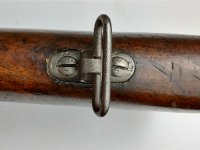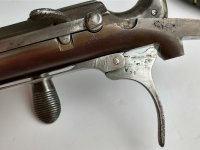We've had a few Prussian reworks come through the forum in recent years (both needle and converted variants), but here is one that doesn't show up too often; the Saxon attempt at a carbine chambered in 11x60.
As with Prussia, the Saxon military decided to make use of the vast number of captured Chassepot rifles from the Franco-Prussian War. During the war, Saxon cavalry had made use of a reasonably modern, but flawed carbine; the M65. This model utilized a breechloading action modeled after the Terry system and was fired with a percussion cap. The performance of this model was lackluster and I find the action is finicky to manipulate (albeit very unique!)

Attempting to bring their armament to a more current standard while a more permanent fix could be adopted, the Saxons converted approximately 10,000 Chassepot rifles to a Mod. 73 configuration. These carbines served primarily in a cavalry role but train units and police were also allocated some on a more limited basis.
This conversion was much different than the Prussian versions, or the trials models the Bavarians experimented with. First, the Mod 73 had a half-stock configuration with most of the barrel exposed. Secondly, the French markings were more or less scrubbed and new ones applied. The bolt was much more ornate than the Prussian rebuilds, though it lacked a gas shield. There was, however, a safety mechanism added on the left side of the receiver. When the safety was engaged, the bolt was locked and the carbine could not be fired.

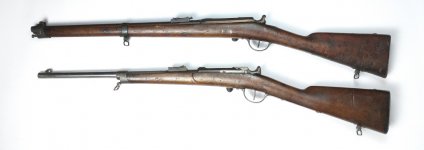
Initially, there were no sling swivels/loops, but according to Storz, after 1876, the sling provisions were added as the old carbine hook method of carrying the weapon was phased out.
The Saxons were apparently proud of their conversion and it was evaluated by both the Bavarians and Prussians-- Storz notes the Bavarians were less than impressed and evaluated it only to validate it's "unsuitability". The Prussians were kinder and ranked it "satisfactory"--albeit not without noting design flaws.
In 1881, the Saxons finally began to acquire Kar71s, gradually phasing out the stop-gap chassepots. The Mod 73 was produced in relatively small numbers and most of the ones issued to cavalry were scrapped long before WW1. The survival rate was extremely low, though there are a number of documented examples.
This particular carbine is SN 11 and is matching, as built. The wood is in exceptional condition, though the metal has fine pitting on the barrel and parts of the receiver. It is my belief that the pitting predates the rework, as there are parts where the rust blue is over pitting. There is not a unit marking on the buttplate.
In any case, just wanted to share--





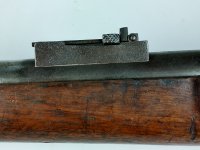

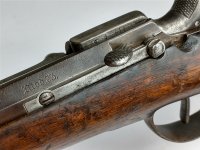


As with Prussia, the Saxon military decided to make use of the vast number of captured Chassepot rifles from the Franco-Prussian War. During the war, Saxon cavalry had made use of a reasonably modern, but flawed carbine; the M65. This model utilized a breechloading action modeled after the Terry system and was fired with a percussion cap. The performance of this model was lackluster and I find the action is finicky to manipulate (albeit very unique!)

Attempting to bring their armament to a more current standard while a more permanent fix could be adopted, the Saxons converted approximately 10,000 Chassepot rifles to a Mod. 73 configuration. These carbines served primarily in a cavalry role but train units and police were also allocated some on a more limited basis.
This conversion was much different than the Prussian versions, or the trials models the Bavarians experimented with. First, the Mod 73 had a half-stock configuration with most of the barrel exposed. Secondly, the French markings were more or less scrubbed and new ones applied. The bolt was much more ornate than the Prussian rebuilds, though it lacked a gas shield. There was, however, a safety mechanism added on the left side of the receiver. When the safety was engaged, the bolt was locked and the carbine could not be fired.


Initially, there were no sling swivels/loops, but according to Storz, after 1876, the sling provisions were added as the old carbine hook method of carrying the weapon was phased out.
The Saxons were apparently proud of their conversion and it was evaluated by both the Bavarians and Prussians-- Storz notes the Bavarians were less than impressed and evaluated it only to validate it's "unsuitability". The Prussians were kinder and ranked it "satisfactory"--albeit not without noting design flaws.
In 1881, the Saxons finally began to acquire Kar71s, gradually phasing out the stop-gap chassepots. The Mod 73 was produced in relatively small numbers and most of the ones issued to cavalry were scrapped long before WW1. The survival rate was extremely low, though there are a number of documented examples.
This particular carbine is SN 11 and is matching, as built. The wood is in exceptional condition, though the metal has fine pitting on the barrel and parts of the receiver. It is my belief that the pitting predates the rework, as there are parts where the rust blue is over pitting. There is not a unit marking on the buttplate.
In any case, just wanted to share--










Last edited:





